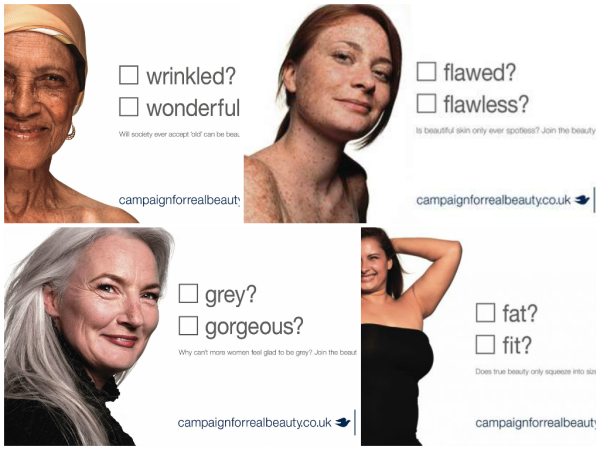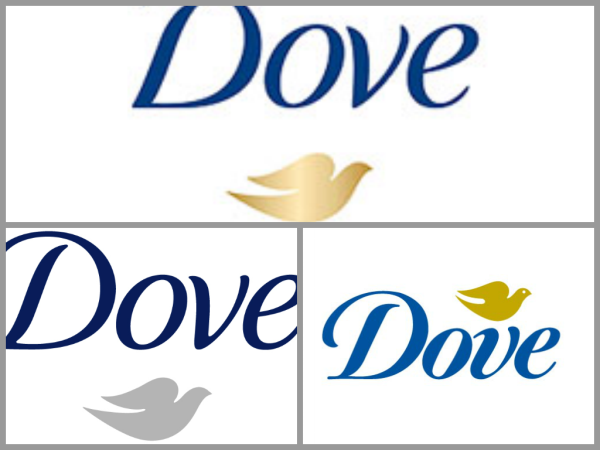Business owners usually realize that branding is important. But what does "branding" even mean, anyway? Check out this Slideshare presentation called "The Brand Gap" created by Marty Neumier for a little enlightenment! This presentation is one of the most viewed and shared presentations on Slideshare, so even though it's a little long it's worth the read.
Branding is about image and gut feelings. It's how your audience (customers and people you want to be your customers) sees your company. It's important to us because we believe that for signage to truly be great, then your company should also have other great marketing and branding efforts in effect. The more quality your brand image, the easier it will be for your signage to be super effective.
Let's use Dove skin and hair care products as our example in this post because they're a great example of a charismatic brand. When you discuss Dove's brand, you might first think we're talking about their logo: the metallic icon of a dove underneath the word "Dove" in a delicate script font. But actually when we talk about Dove's brand, we're talking about how, in the past ten years, Dove has created a brand image of being the one cosmetics and toiletries brand that promotes healthy body image and self-esteem in women—particularly young girls and older women.

Examples of some of the "campaign for real beauty" ads Dove first put out
Of course there are critics who claim that Dove's "Campaign for Real Beauty" is all about profit, hypocritical, flawed, and even sexist; but despite these criticisms the campaign has still been hugely successful. It's safe to venture that at least part of the reason it was successful was because it followed some of these rules laid out in "The Brand Gap."
1. Differentiation: Dove differentiated itself from all other cosmetics and hair care brands by encouraging women to love their natural beauty (which they claim comes from self-confidence and happiness), where most other companies peddling the same kinds of products were promoting the idea that their products would increase sex appeal.
2. Appealing to/Creating a Tribe: Branding today is all about creating tribes. Just like it sounds, the word "tribe" here means a group of people who are banded together under a common interest and self-definition. Dove has been so successful because it appeals to all women who have ever felt insecure about their looks—which, as humans, it's safe to say is a fairly large tribe.
3. Focus: They hyper-focused all of their products to one brand idea: Dove=self-esteem.
4. Creativity and Innovation: Say what you will about Dove's ads, but they have had some pretty creative ones. In one of its first major campaign pushes for "real beauty", Dove hired "real women" (a problematic term, but it worked for them) instead of professional models to be in their print ads and commercials. They famously put women of all ethnicities and dress sizes in white underwear and posed them together as "real beauty." They also started a heartwarming video featuring little girls to promote Dove's "self-esteem fund" to help girls improve their body images. Most recently, they produced a unique video (that at no point mentions Dove products, mind you, but just how all women are "more beautiful than they think") called "real beauty sketches" that quickly became the most viewed and shared ad of all time. It currently has over 61 million views on YouTube.
5. Flexibility: Any brand should be strong enough that it can stand for a little change. As Neumier says in "The Brand Gap," "If people can change their clothes without changing their characters, why can't brands?"

Various versions of the Dove logo used on different products from different times. The colors and placement of the dove may change but it's always recognizable.
Following these steps has helped Dove create a strong brand image and name for itself, and they should really work for any company. Think about the type of products, services, and advertisements your company is putting out and ask yourself these questions:
1. What makes my company different from our competitors?
2. Who are our potential tribes? (You can often judge this by creating buyer personas out of your average customer)
3. What is the focus of our company? If we had to sum our company in one mission statement, what would it be?
4. How can we continue to make our company/products different from our competitors'?
5. Is there something we need to change or improve upon? How can we go about doing this?
Answering and responding to these questions is how you can create a strong brand for yourself and for your company. Stay tuned for further installments of branding advice from 12-Point SignWorks! Click the button below to contact us and talk to our marketing experts about your branding questions.



Leave a Reply